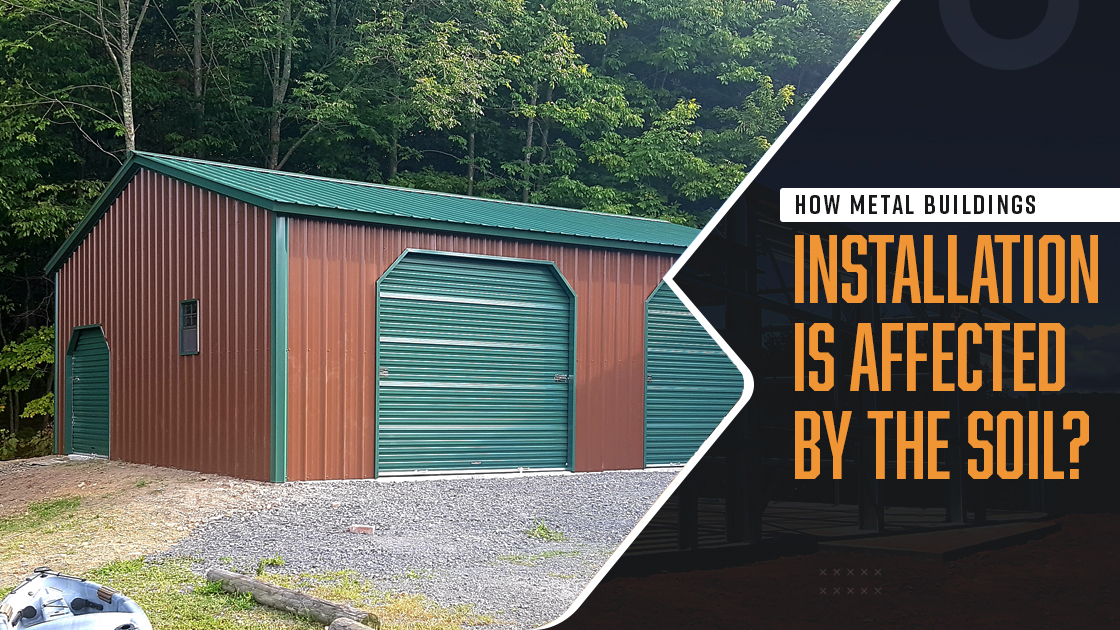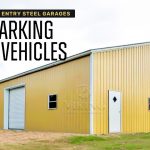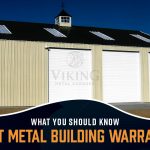How Metal Buildings Installation Is Affected by the Soil?
August 3, 2023
Have you heard of metal buildings in your neighborhood or city? That’s because steels are durable, long-lasting, affordable, and stronger than timber. Are you wondering about owning a metal building too? If yes, do you have concerns about the foundation – which one should you pick? If yes, let’s get started.
What are the Types of Soils for Your Metal Building Foundation?
Clay
- These are fine particles with high water-hoarding capacity.
- Clay expands when exposed to moisture and shrinks when dry.
- When dry, it stiffens and can crack.
- It is a good option for dry climates with no flooding.
Slit
- Particles of the slit are somewhere in between sand and clay.
- It can hold a moderate amount of water.
- Slit, like clay, expands and contracts when exposed to water.
- Designers of foundations should take into account the fact that slits are compressible.
- A drawback is – it is prone to erosion.
- Precautions like proper drainage are vital to avoid instability.
Sand & Gravel
- These are large particle that allows water to pass through easily.
- They come with a good load-bearing capacity.
- Sand with gravel is stable and a good option for constructing a base.
- They do not retain water, making the foundation unlikely to shift.
Loam
- Loam is mainly a mixture of clay, sand & silt.
- These are dark in color, dry & crumbly in texture.
- They retain moisture and are relatively fertile. Excellent choice for gardening, isn’t it?
- For foundation, loam can too expand and come into contact with varying moisture levels.
- It does not expand, shrink or change its shape.
Rock & Bedrock
- Rocks like limestone, sandstone & bedrock have a good load-bearing capacity.
- It is stable & a good choice for metal building foundations.
- Rocks need to be leveled for the metal structure to stay in place. If not, you have to use an anchor.
- It serves as a good foundation as it is stable & has depth.
- It is resistant to water damage.
- It is a great option for residential or commercial buildings.
Peat
- It constitutes decaying organic matter.
- These have poor weight-bearing capacity.
- It is dark brown or black in color & is porous.
- Peat holds onto a lot of water but also dries out quickly.
- It can compress easily & will need sufficient external stability.
What are the Types of Foundations for Metal Buildings?
Dirt or Gravel
- These are cost-effective and suitable for smaller structures.
- It is fit for areas with stable soil & minimum moisture level.
- It is ideal for sand & gravel type of soil.
- It can be prone to erosion because it is loose by nature.
- Uses – carports, garden sheds, storage units, agricultural buildings, etc.
Asphalt
- It is more robust and durable and will last longer than dirt & gravel.
- It is most appropriate for clay or silt soil types.
- Asphalt is stable & moisture-resistant.
- Uses –metal garages, residential steel buildings, etc.
Concrete
- It is the most robust option among the three.
- Concrete slabs are long-lasting.
- These have excellent weight-bearing ability.
- It is suitable for rock or loam soil, but you can use it for any soil type.
- Uses – barns, large industrial & commercial structures, etc.
If you are in a hurry, here is a quick chart for you.
| SOIL TYPE | FOUNDATION THAT FITS |
| Clay | Asphalt |
| Slit | Asphalt |
| Sand & Gravel | Dirt or Gravel |
| Loam | Concrete |
| Rock or Bedrock | Concrete |
| Peat | Concrete |
So, what are you supposed to do?
Which Soil & Foundation Type Combo Suits You the Best?
You must choose your foundation based on the soil type of your property. Usually, metal building installation kits do not come with any guide for pouring the foundation. If unsure, let a professional look at it and work it out.
You do not want to leave shaky ground for your new metal structure. Are you looking to build a foundation on any soil on your site? Look no further than Viking Metal Garages – America’s top supplier for metal building installation.
But wait – there’s more. You will need to secure a permit and follow your local building codes. Failure to do so can lead to future trouble, including dismantling the whole metal building installation.
Now that you are clear about various types of soil grades & foundations, you must be wondering how to prepare your site for metal building installation. Let’s dive in!
First, you will need to level your site of installation.
You will need professional grading equipment with a primary knowledge of construction. Don’t worry if you are not aware of it. Hire a contractor, and they will do the job for you.
Second, you will need to check the condition of the soil.
You will need to buy high-quality dirt for poor-quality soil. It will ensure that your building does not dip in with time.
Third, you should lay your foundation during summer.
It is especially true for concrete. Temperatures of around 40℉-90℉ are suitable for curing. Ensure the concrete is poured beneath the frost line of the soil.
Fourth, it would be best to give your foundation time to cure.
This is chiefly true for concrete, as it can take weeks to set. If not cured properly, your concrete slab will develop a crack in it. And you don’t want that, do you? You can use sodium thiocyanate, triethanolamine, or calcium formate to set your concrete base faster. [source: website]
And That Was Only the Beginning:
Laying your metal structure foundation is just the beginning. However, it is one of the most critical tasks. With Viking Metal Garages comes years of experience & best craftsmanship available at your fingertip.
We understand that sometimes too many options can be overwhelming. Having a new metal building installation can take a lot of work.
Since metal buildings are a significant investment, taking precautions is essential to avoid any mistakes. For a strong building, avoid errors when pouring the foundation. Contact us for a quote or service discussion. We’re happy to help.

